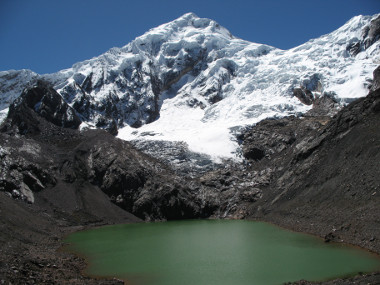A dwindling wellspring
During Peru’s long dry season, seasonal glacier melt releases sorely needed water from frozen storage. The warming climate initially increased the flow, boosting agriculture and hydroelectric power. But Andean glaciers have continued to shrink, and so has the water supply.

“It’s much farther along than we thought,” said Jeffrey Bury, professor of environmental studies and faculty director of the Center for Integrated Spatial Research. Bury’s research focuses on how glacier loss and social factors impact access to water in Peru, from its high mountains to its coastal cities.
Bury and collaborators now report that the Cuchillacocha glacier is shrinking 37% faster than previously predicted. Streams and wells have dried up, forcing people to travel, build new infrastructure, or relocate to find water. In addition, heavy metals from bedrock exposed by the receding glacier and the area’s long history of mining have contaminated mountain streams.
“The scale of these changes is astounding,” Bury said. Demand is growing, with cultivation of profitable, water-intensive crops for export on the rise, and expanding cities consuming more clean water and power. “There will be a point when supply won’t meet demand,” he said. “It’s just a matter of time.”

